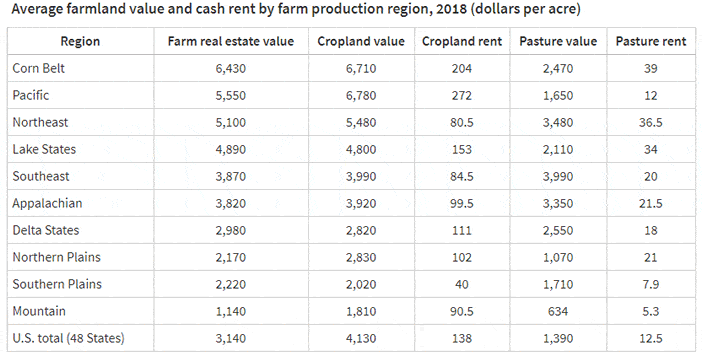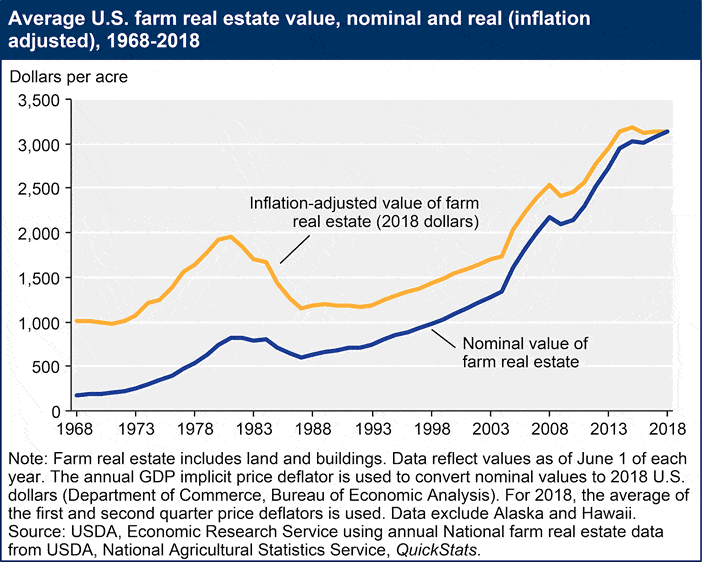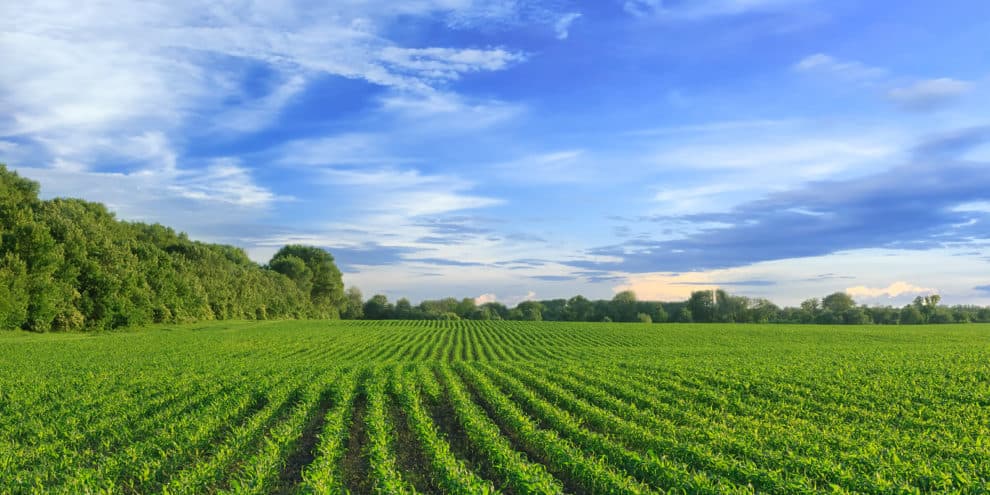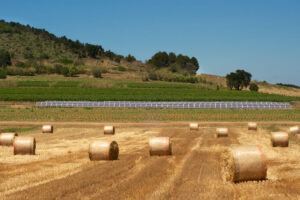Like stocks or other traditional assets, agricultural investments include many different sectors within the industry as a whole, making it hard to decide which type of farm meets your goals. One of the most common options for long-term investments in agriculture is row crops. These land-based commodity crops, like wheat, corn, and soybean, are staples of almost every country’s diet, and have historically been used by investors as a hedge against inflation. In addition to being sold as cash crops and consumed worldwide, these products are often used in feed for livestock and are the raw ingredients of almost everything we eat. The need for these crops will never subside; grains, corn, and soy are extremely prevalent in the food industry that demand is guaranteed to stand the test of time.
Row crops are a smart, land-based investment.
Like many agricultural investments, row crops typically have a low correlation to economic cycles, meaning this investment can be used to hedge against other investments in stocks and bonds. Since World War II, returns on grain have been uncorrelated to the stock market cycles. Investments in crops can also benefit from inflation, which may negatively impact stock and bond investment returns. When the price of processed food rises, the price of the raw materials needed to make that food will rise as well.
Grains are also being used as an energy source. Corn processing for fuel ethanol has strengthened corn prices much more significantly in the past. Biodiesel consumption in 2017 required production use of 6.2 billion pounds of soybean oil or the oil from 532 million soybean bushels. The rise in protein consumption has also increased the consumption of soybeans.
While income-producing row crops are a great investment in themselves, the land backing the investment is just as valuable. Farmland is a high-valued asset, and can vary in value depending upon land use. Cropland has historically maintained a substantial land value premium over pastureland due to the higher per-acre returns associated with crop production.


Screenshots source: USDA
Long-Term Returns
Investors can expect to make less money from row crops (generally single digit returns) than they can from specialty crops. But, because these returns can be hedged with commodity futures and crop insurance, row crops represent a very safe form of steady yields, plus long-term land appreciation.
Like with any agricultural investment, population growth is a primary driver for the investment. The changes in the standard of living worldwide have also led to increases in the price of these commodities. Row crops can include all sorts of grains, such as wheat, barley, and oats, as well as corn and soybeans. The vast majority of diets worldwide include some sort of grain or other row crop, but not all countries have the ability or capacity to meet the production needs of their population and therefore must import what they cannot produce. The increased need for grains does not necessarily mean people are consuming more grains, though that is part of the explanation. As consumption of beef, chicken, and other meat increases, the need for grain to feed livestock also increases, and the demand for these row crops rises.
Organic row crops are increasingly in demand also, and can bring higher returns for investors. Row crops are susceptible to different risks than traditional investments. These risks can include poor weather, natural disasters, or crop disease that impact the value of the crop. It is important to note that like many agricultural investments, row crops are not intended for immediate returns, but are intended for investors with a long term outlook.
This content may not be used or reproduced in any manner whatsoever, in part or in whole, without written permission of LANDTHINK. Use of this content without permission is a violation of federal copyright law. The articles, posts, comments, opinions and information provided by LANDTHINK are for informational and research purposes only and DOES NOT substitute or coincide with the advice of an attorney, accountant, real estate broker or any other licensed real estate professional. LANDTHINK strongly advises visitors and readers to seek their own professional guidance and advice related to buying, investing in or selling real estate.










Add Comment